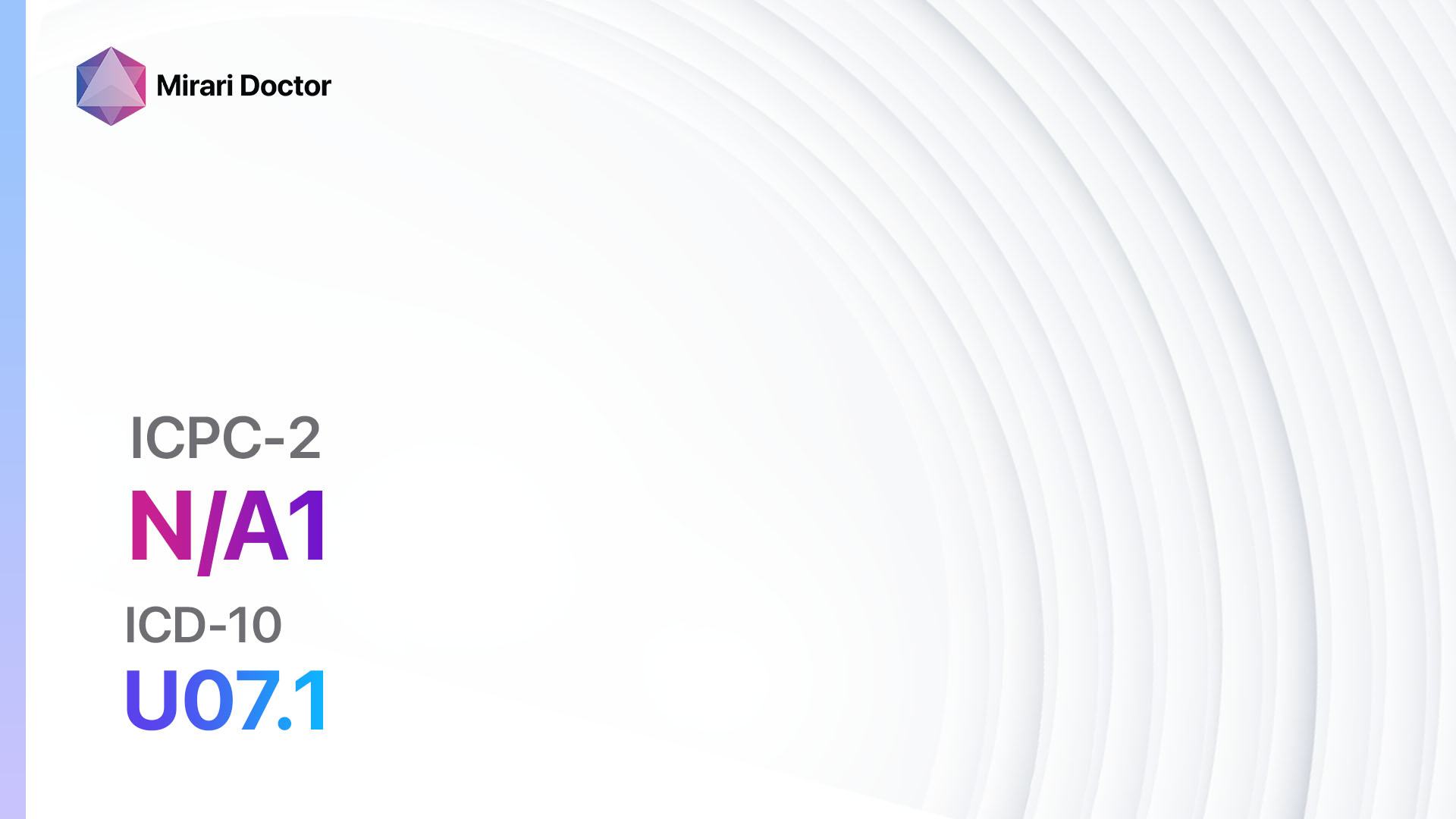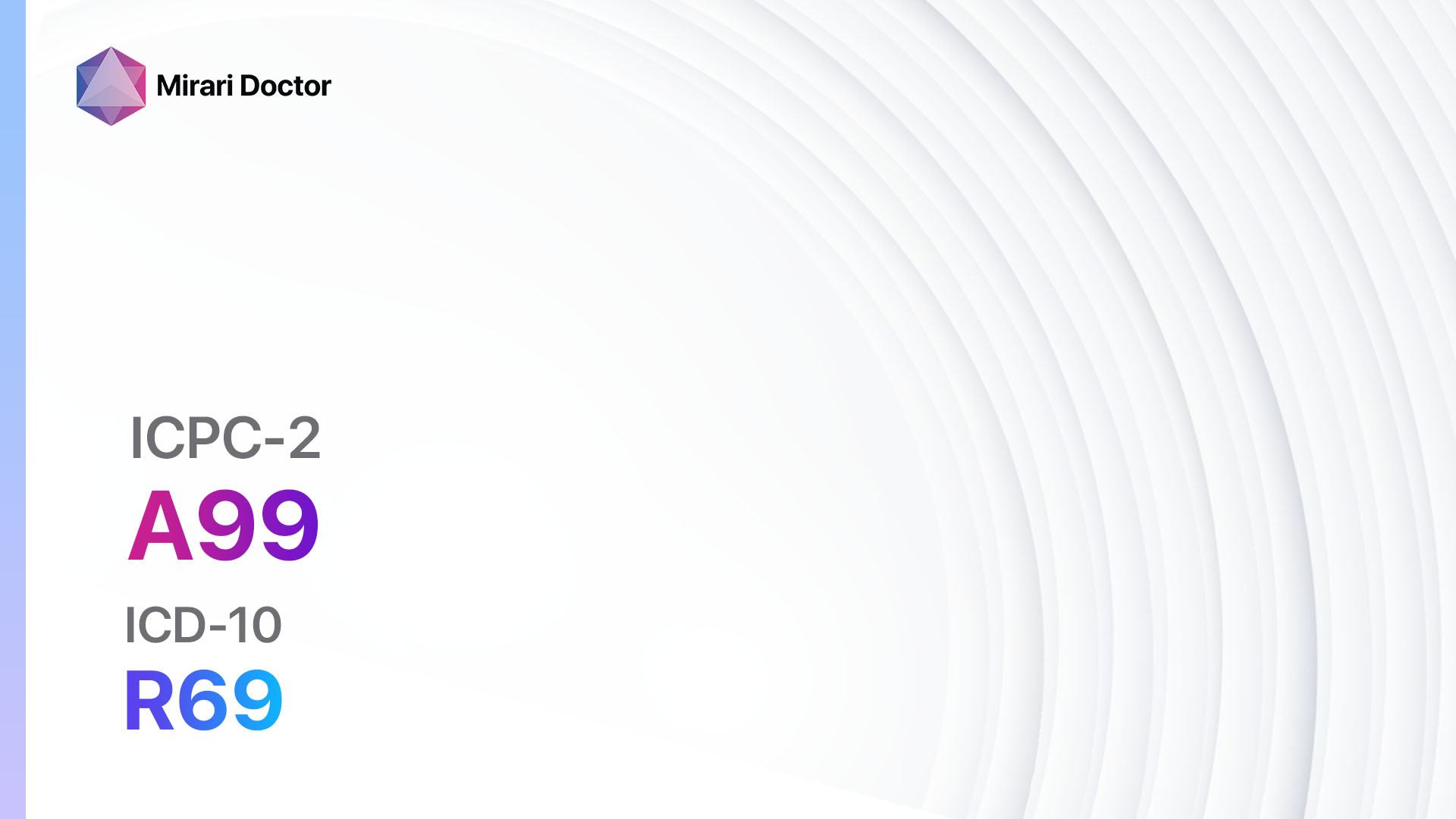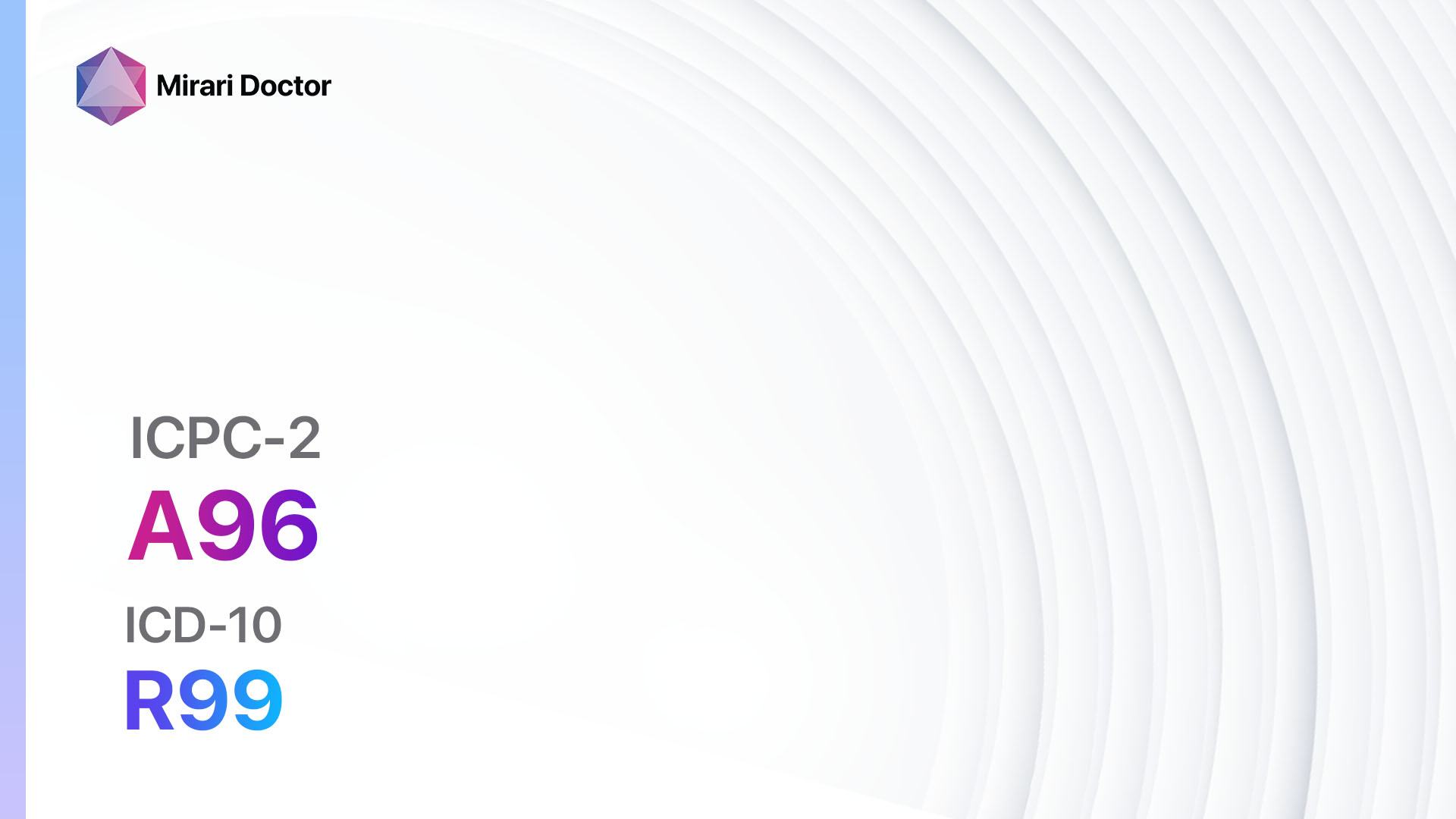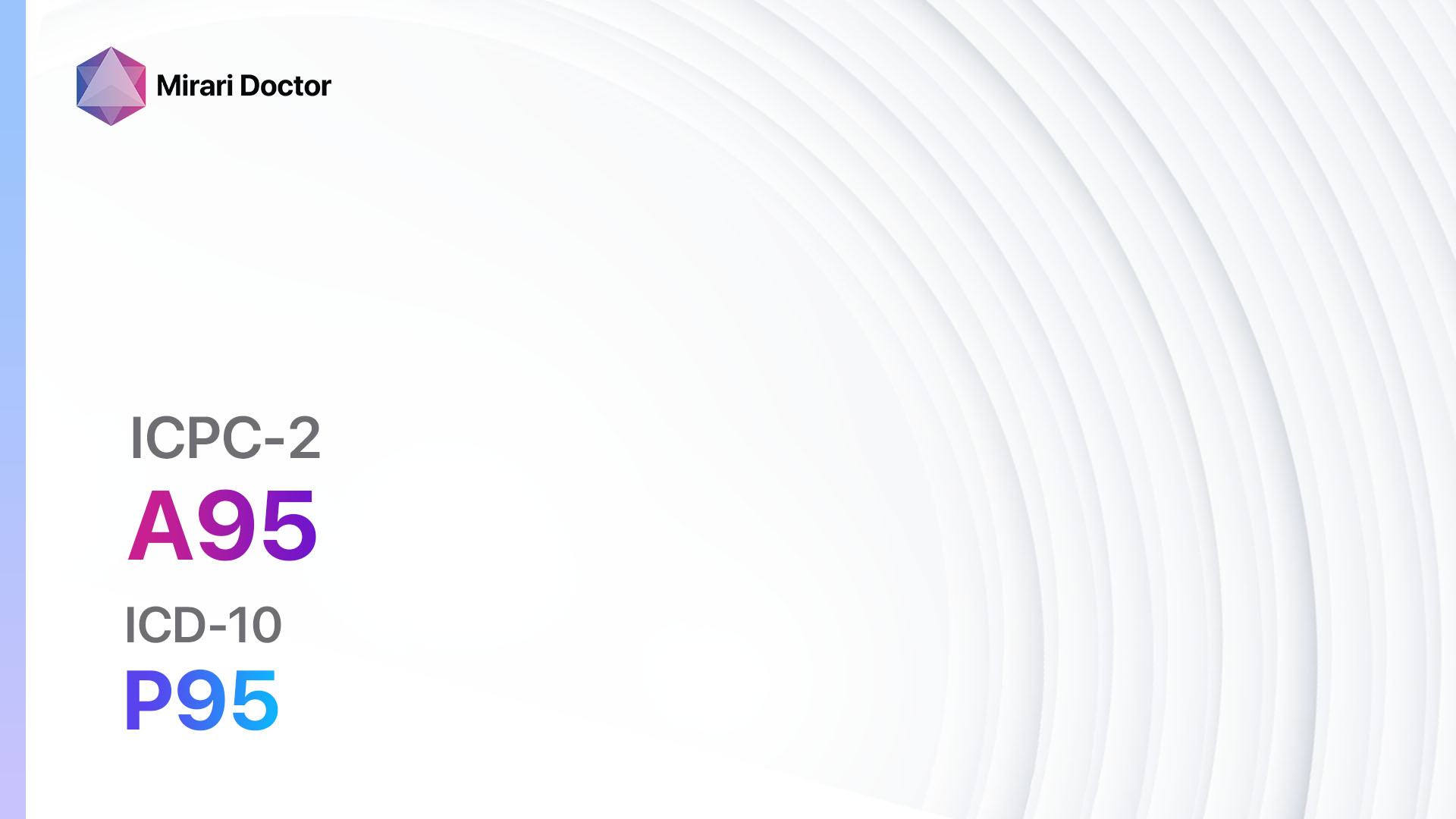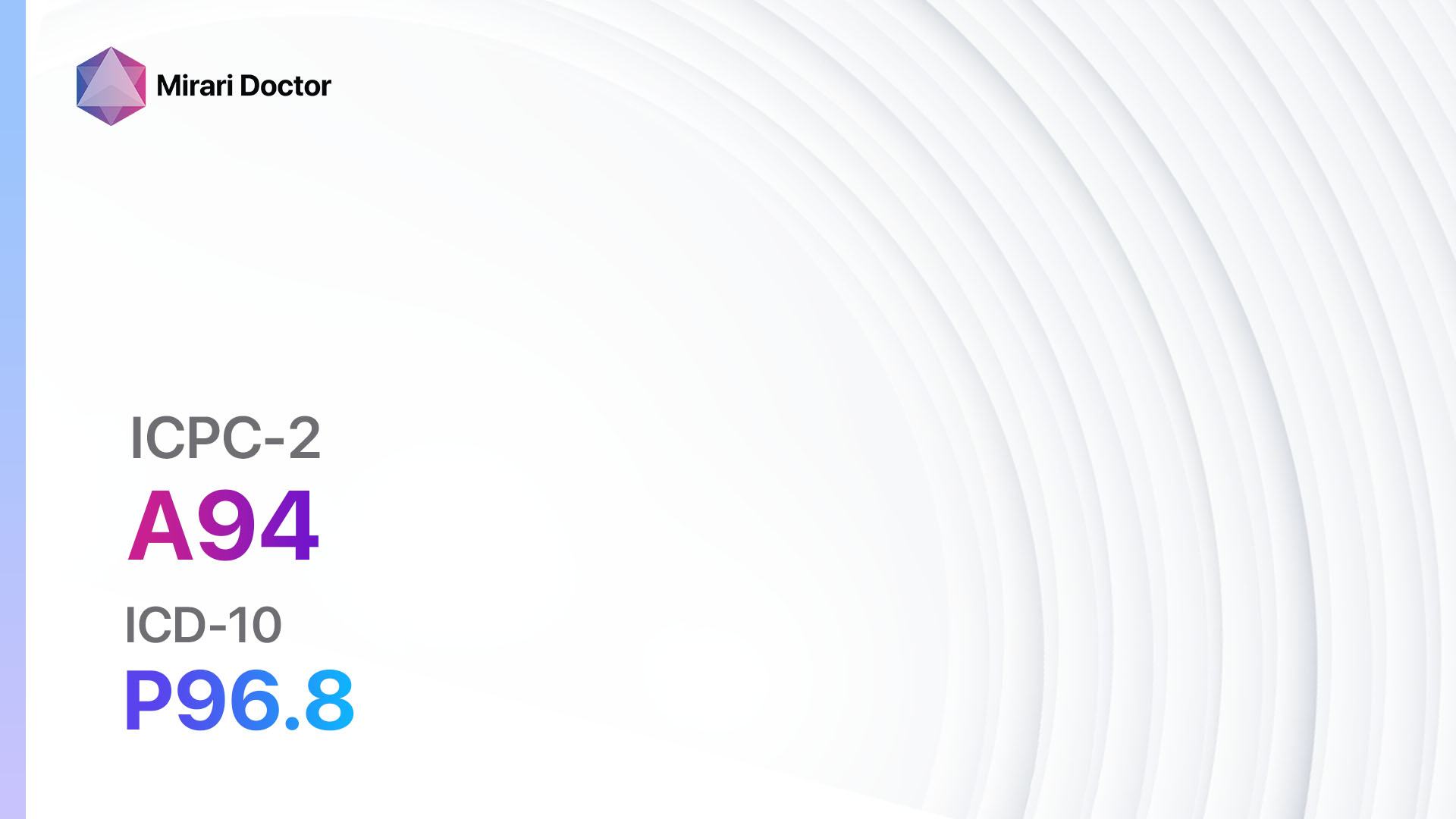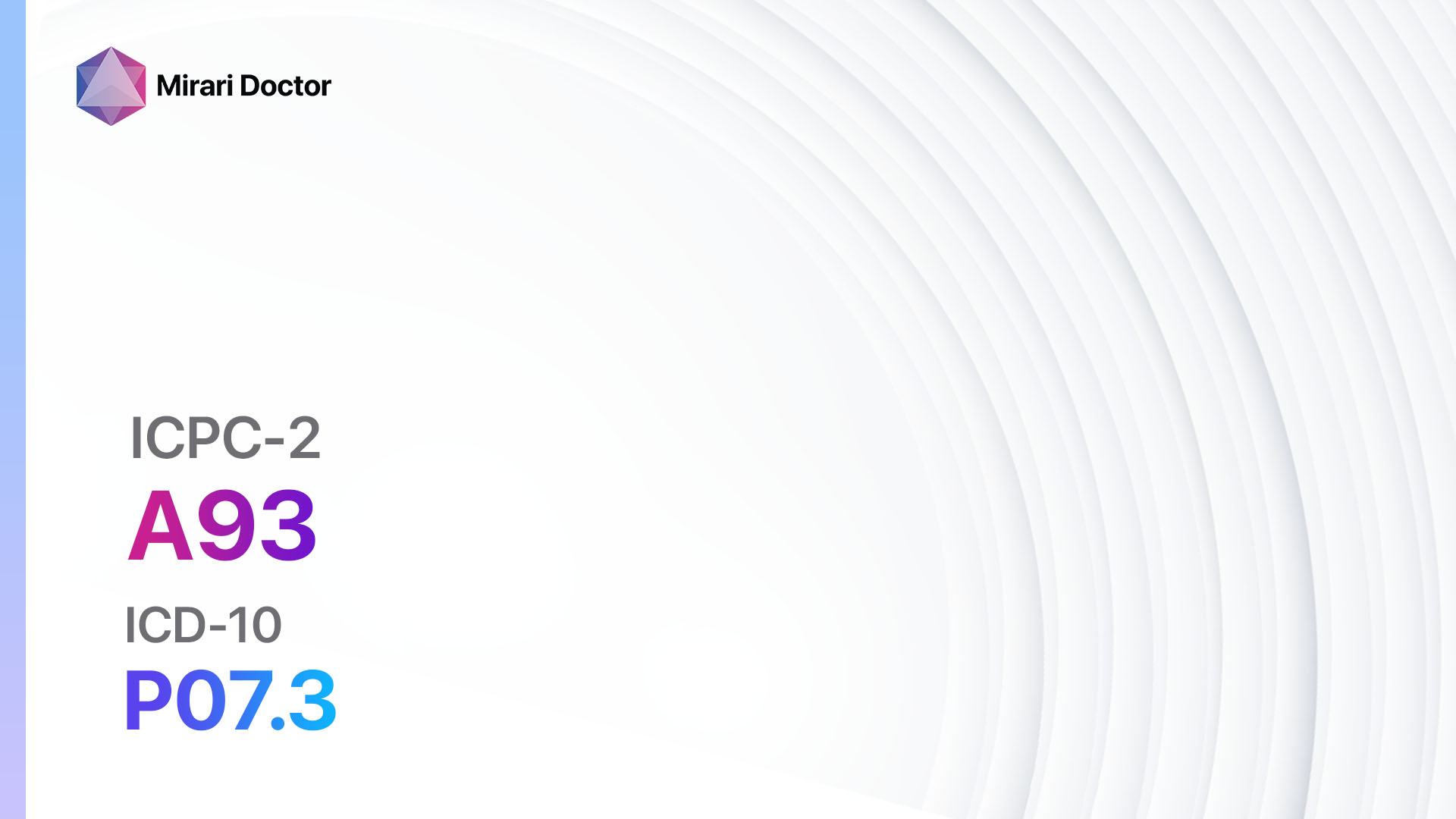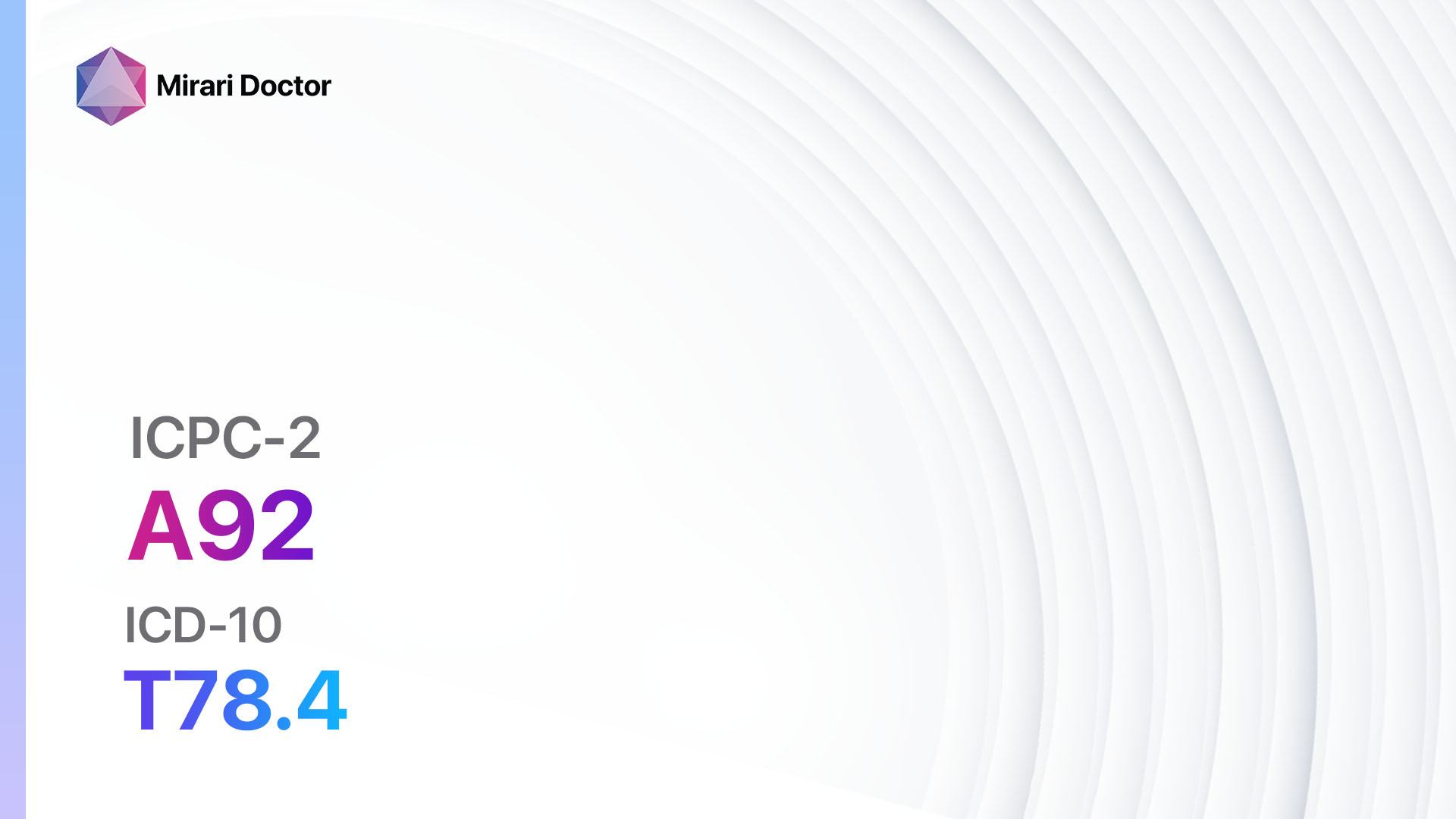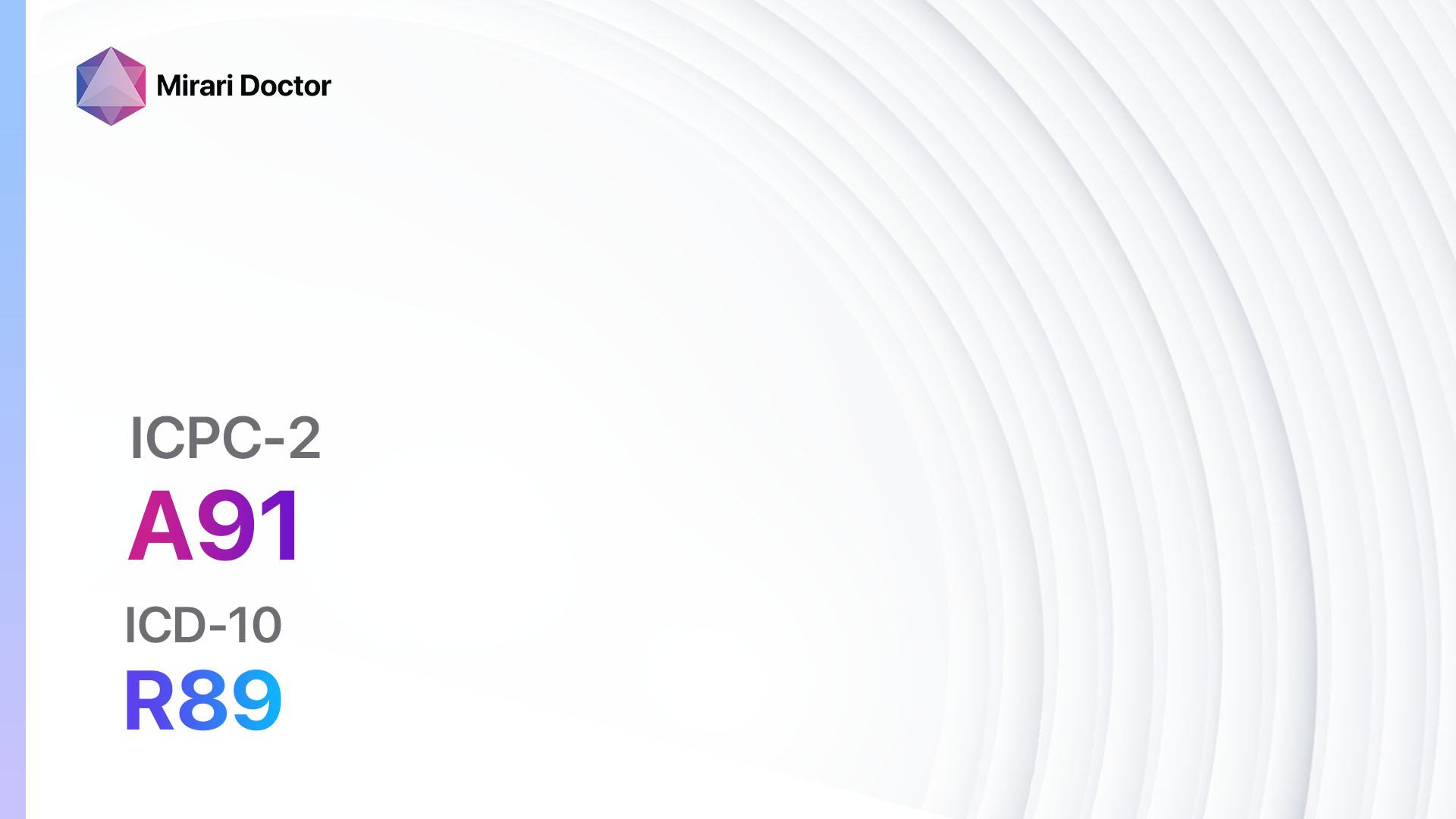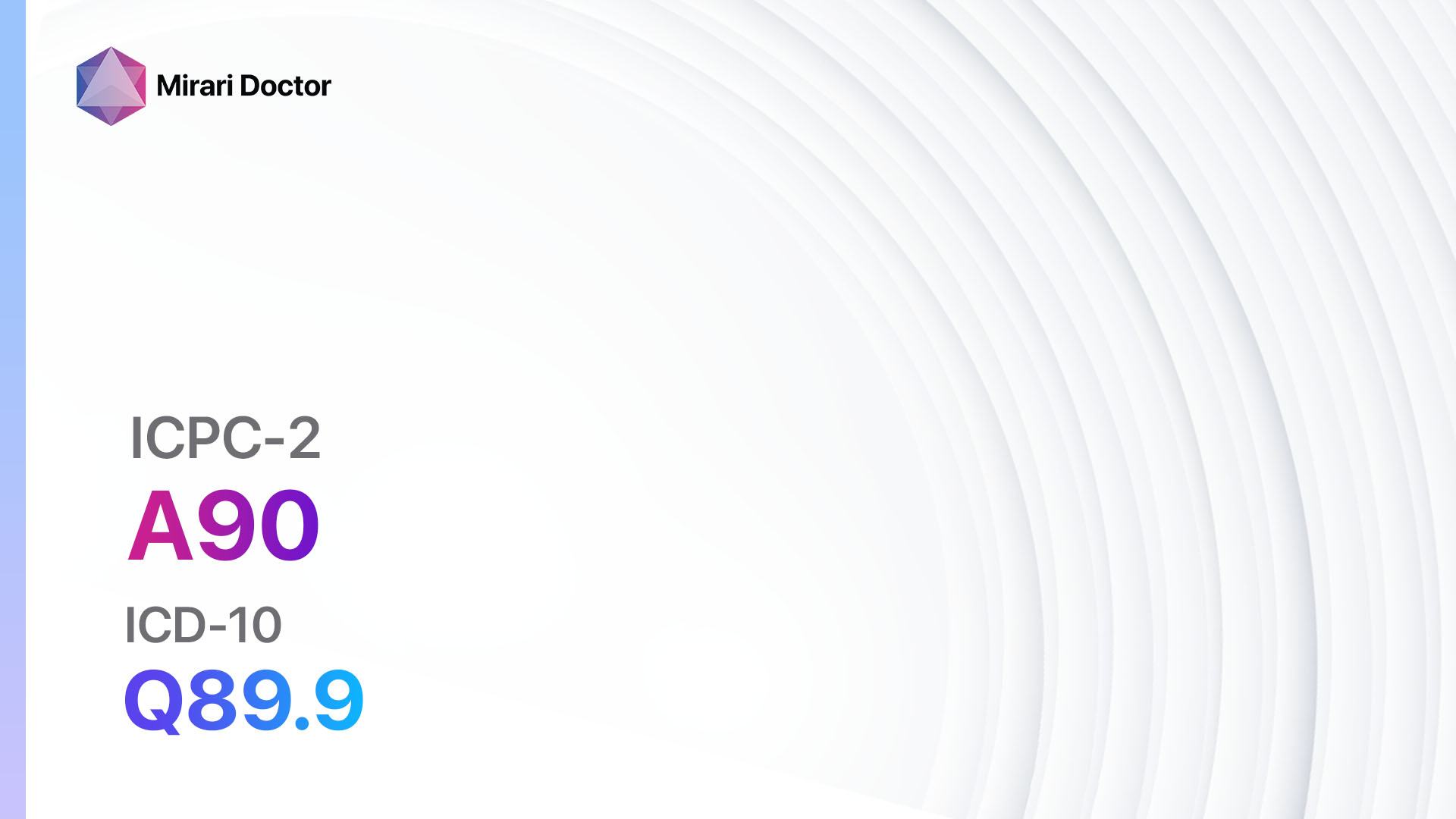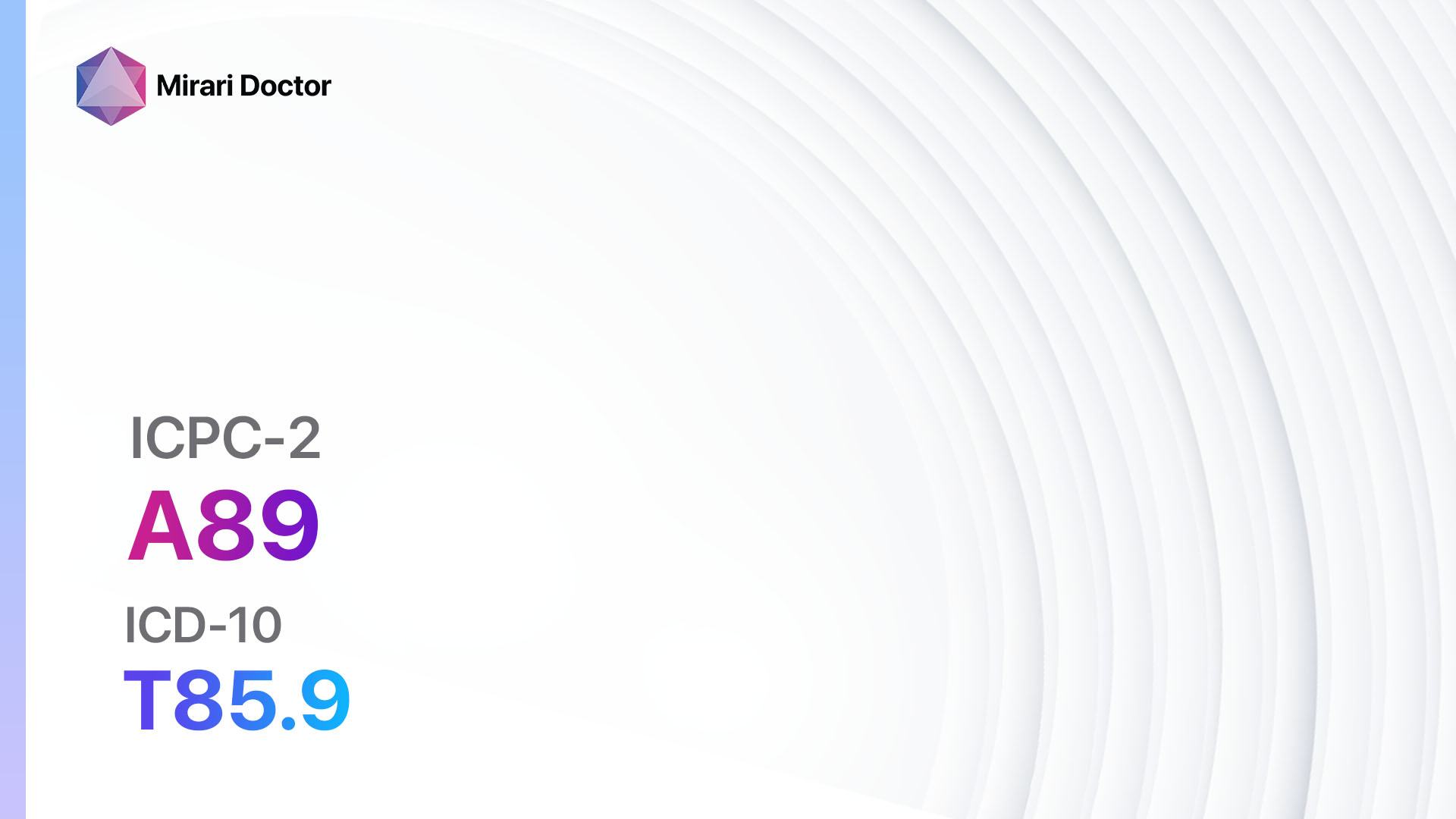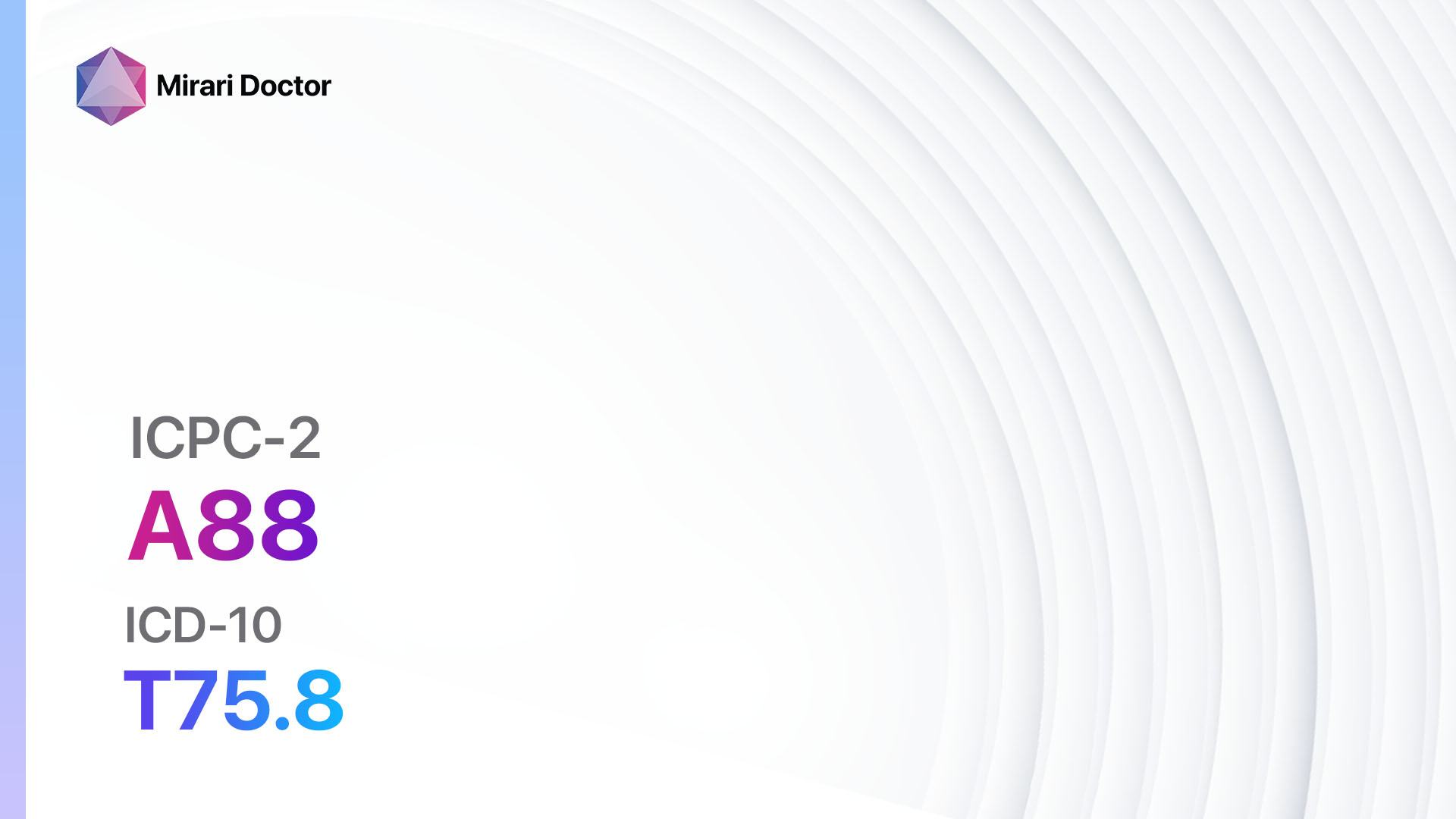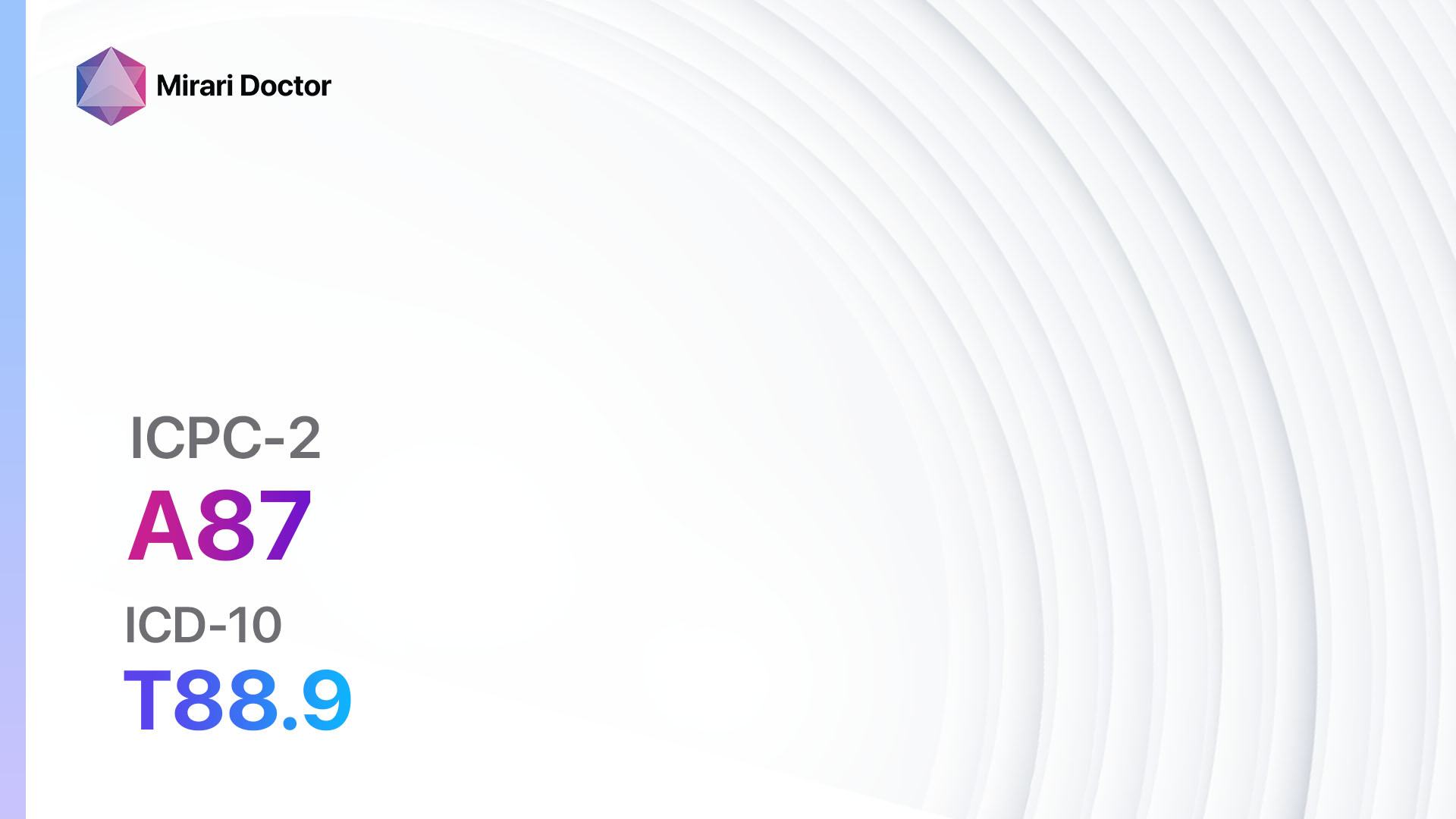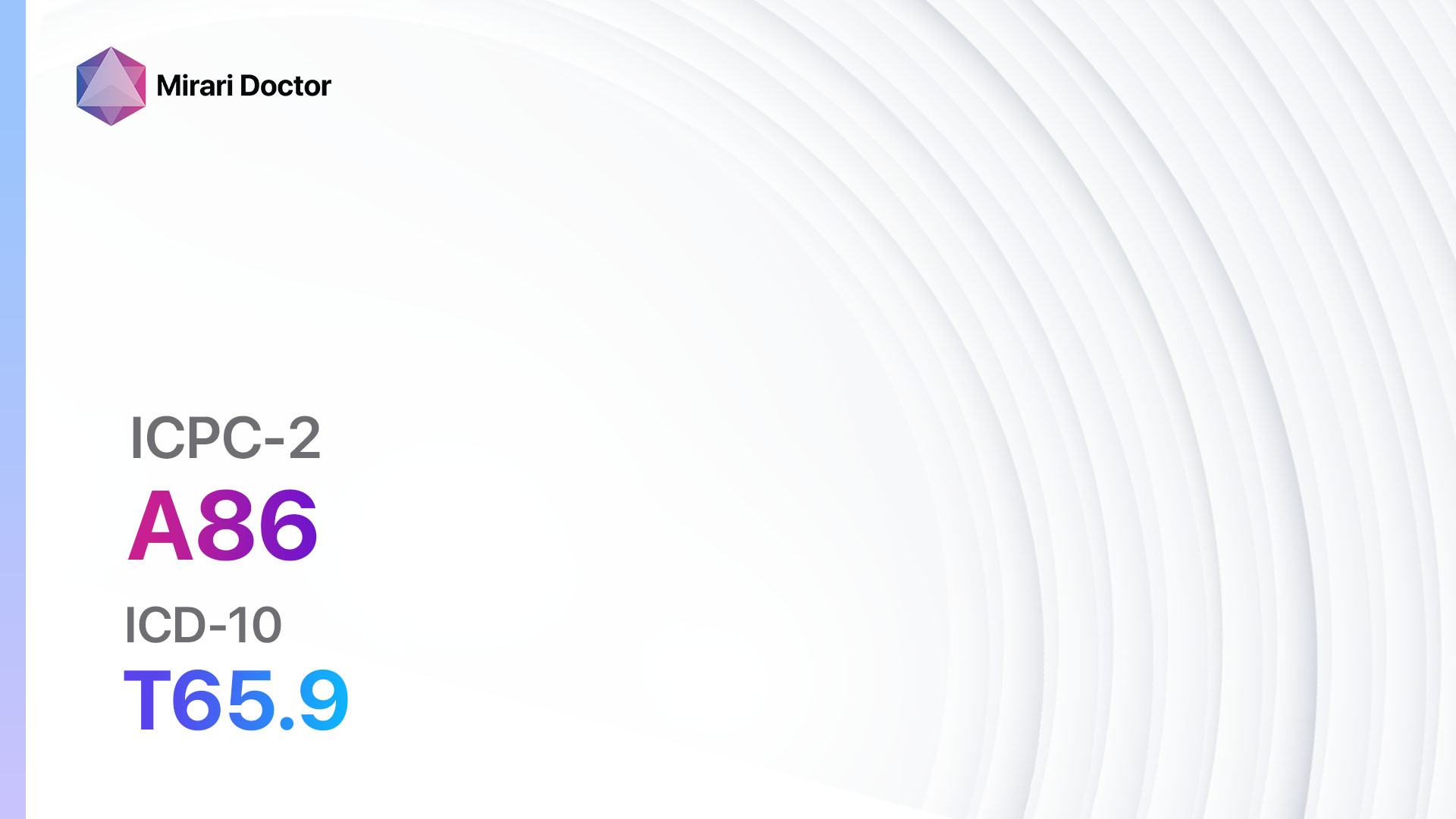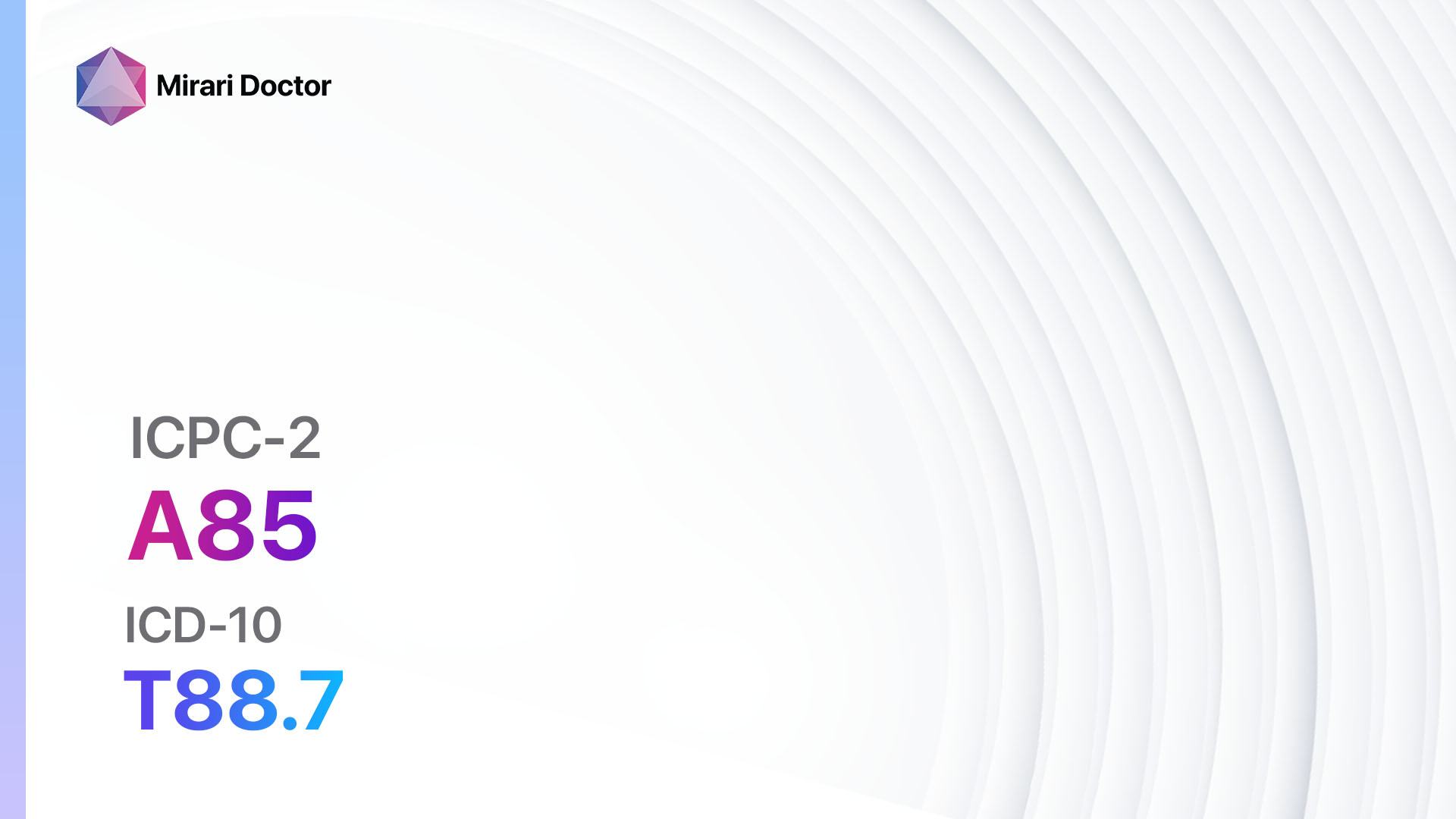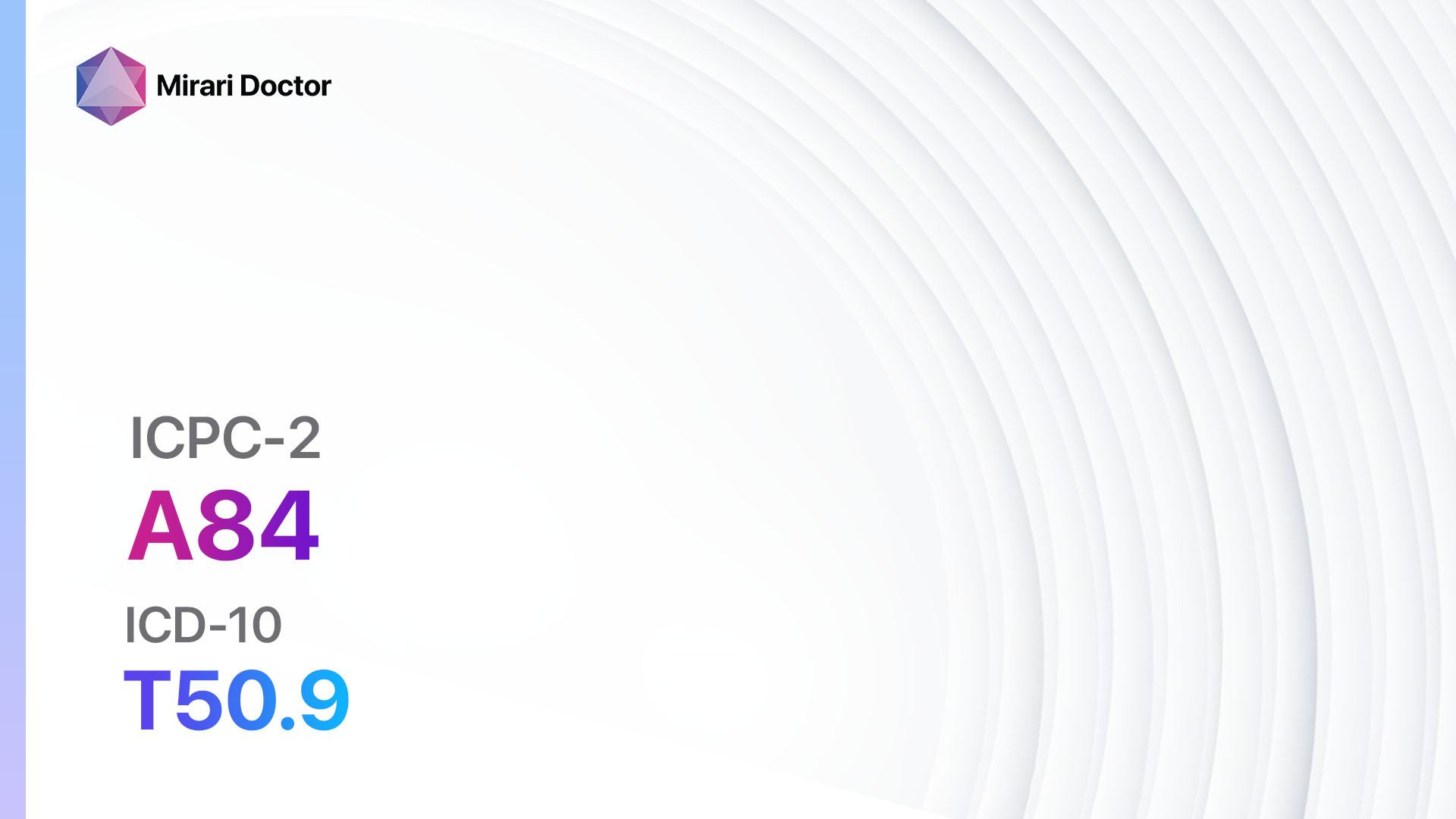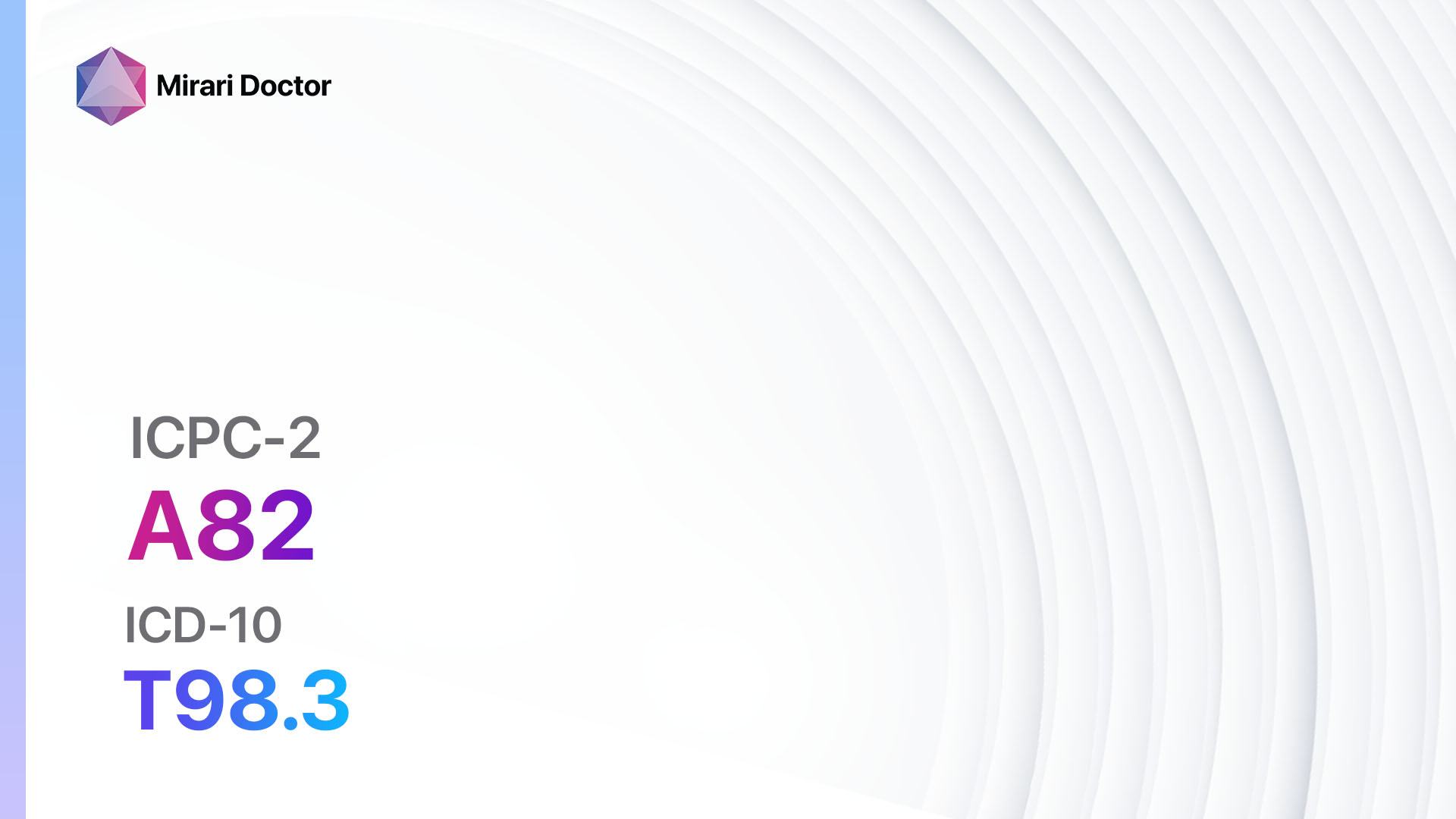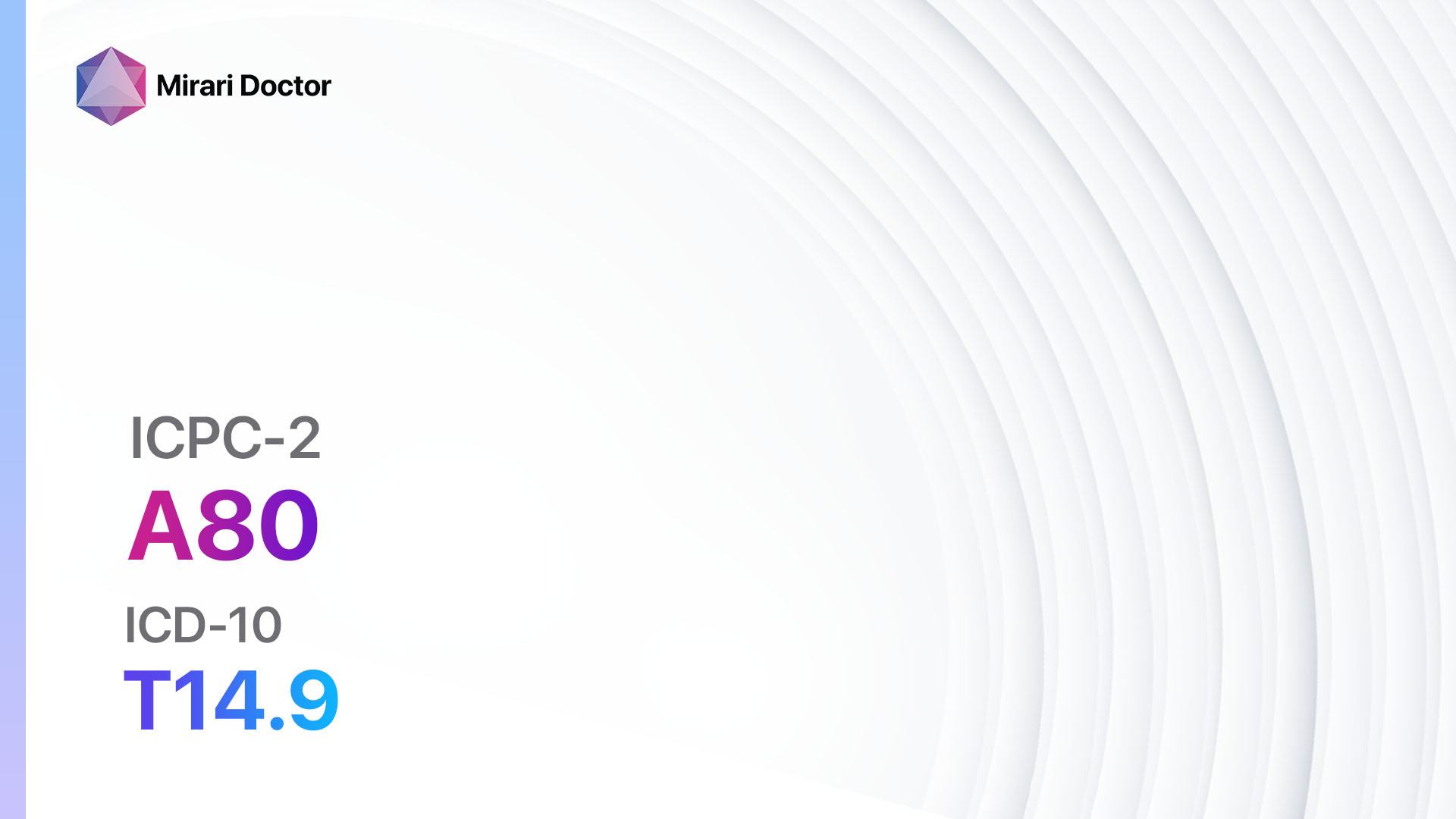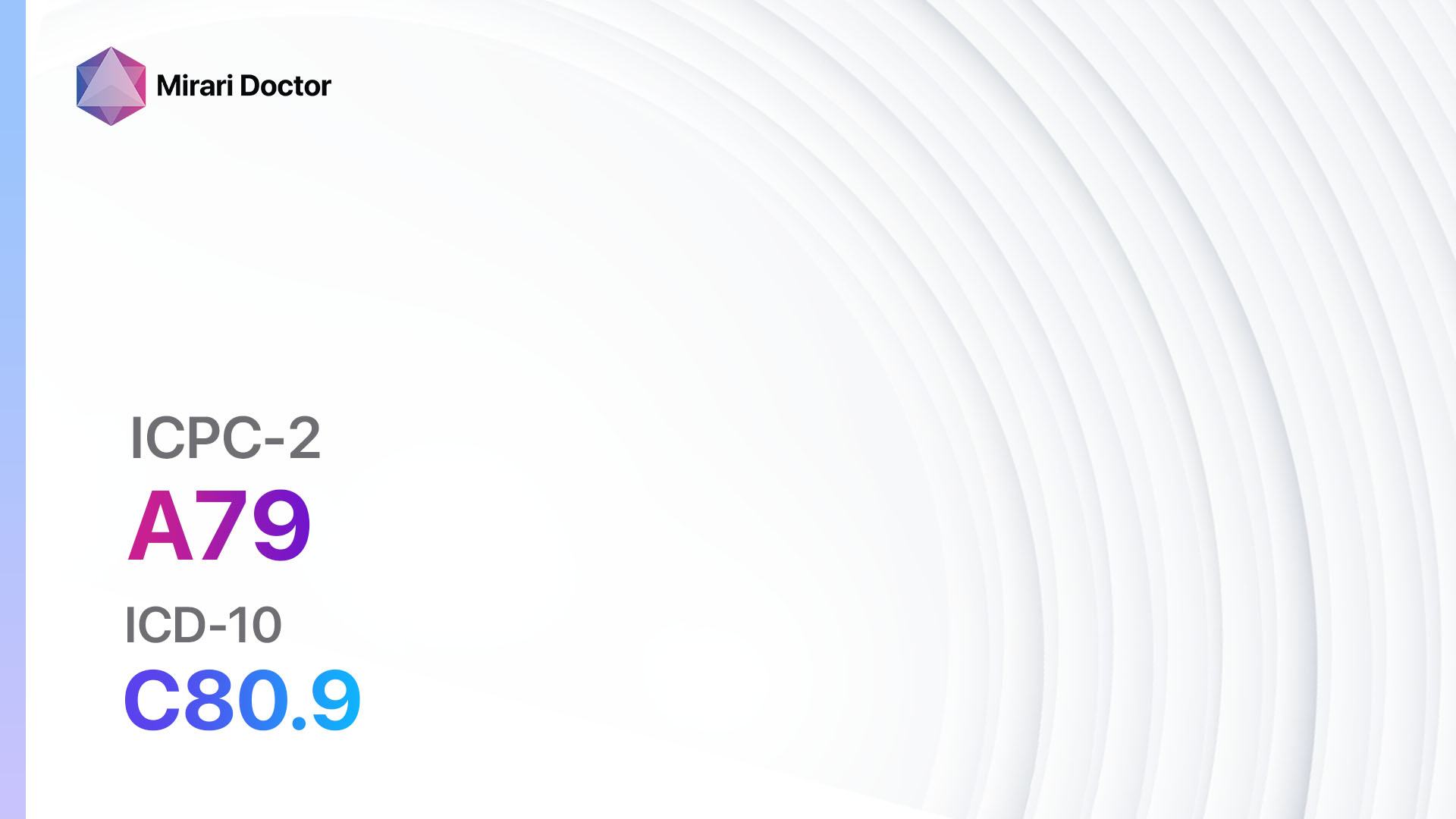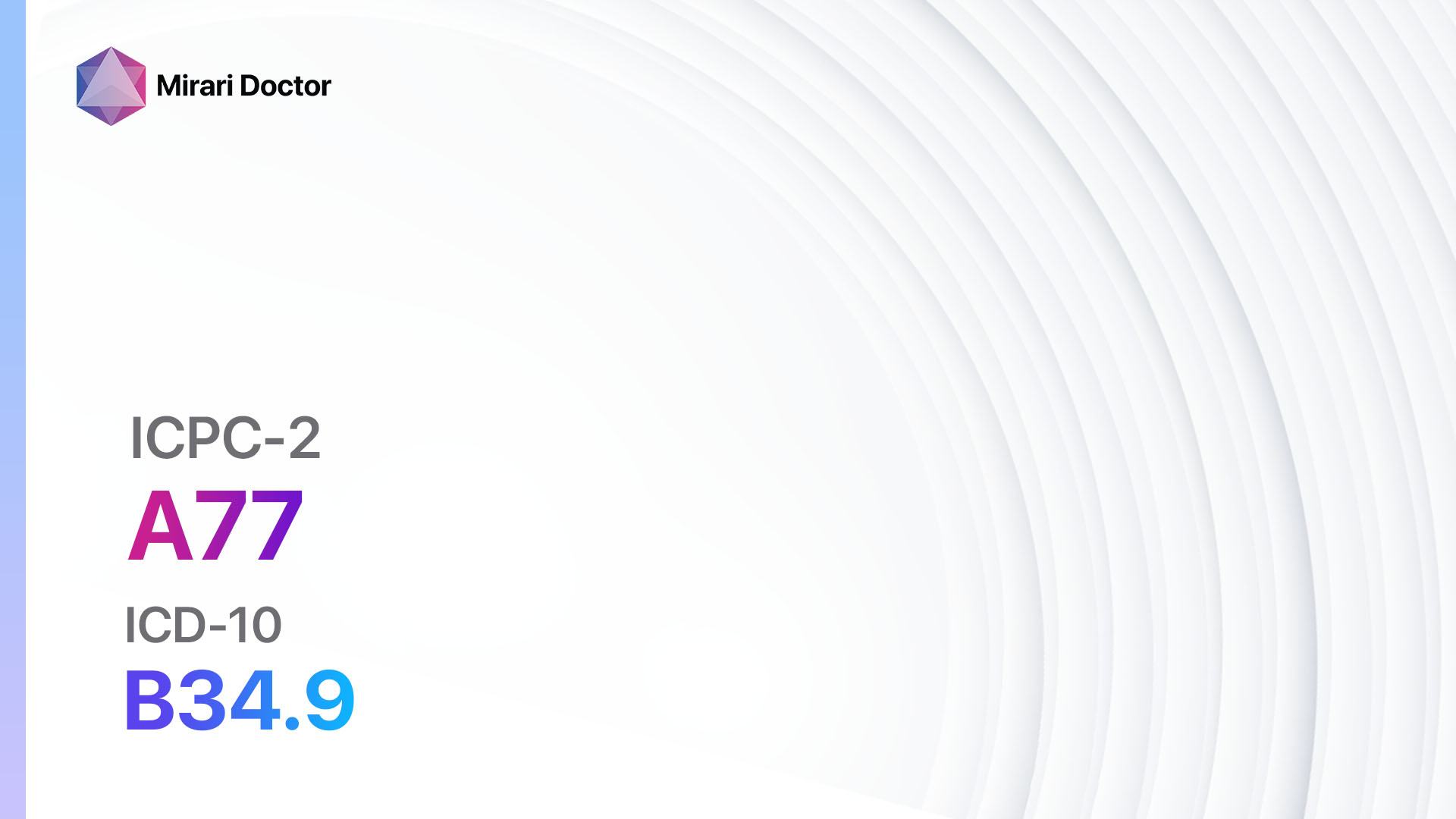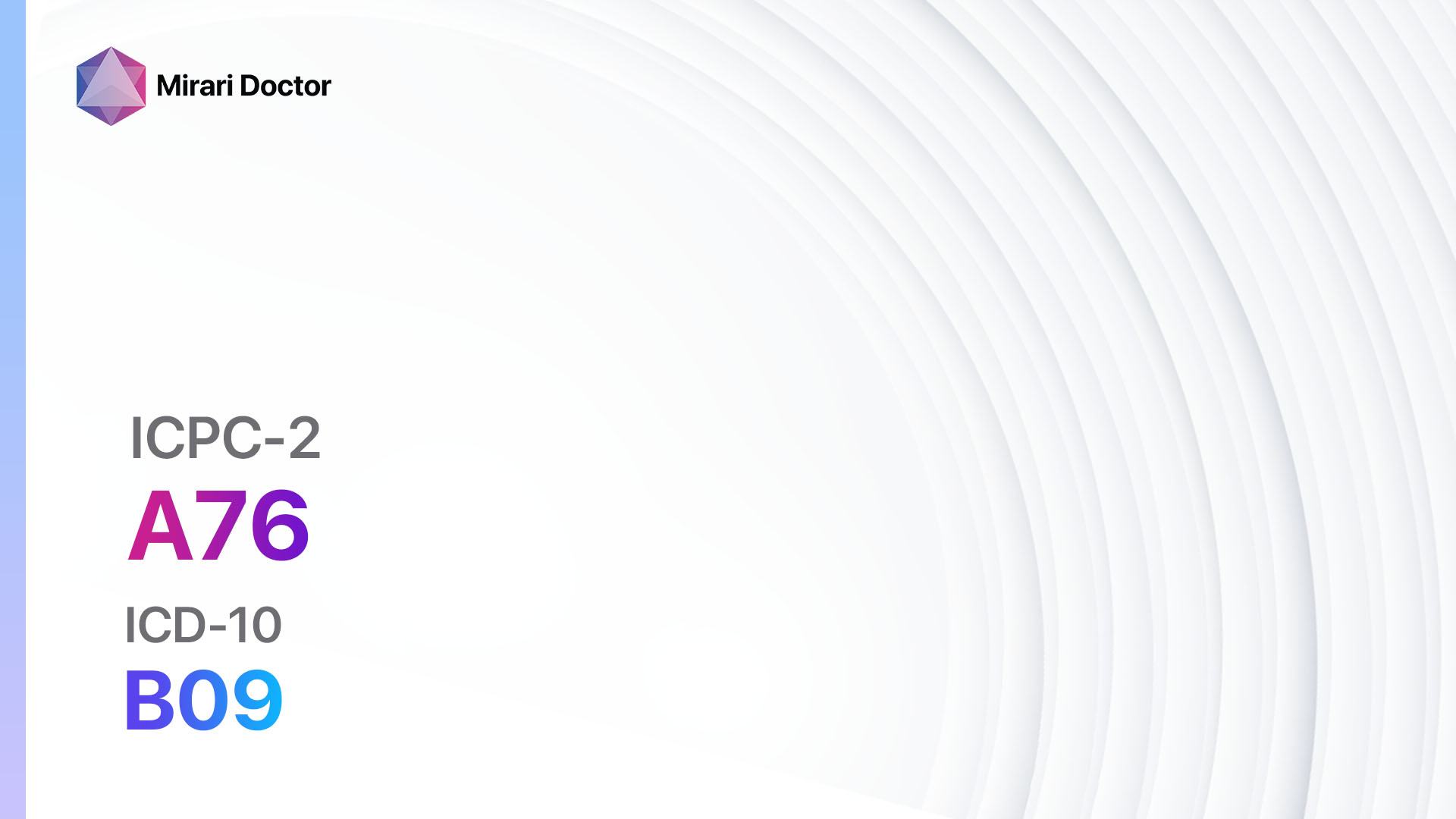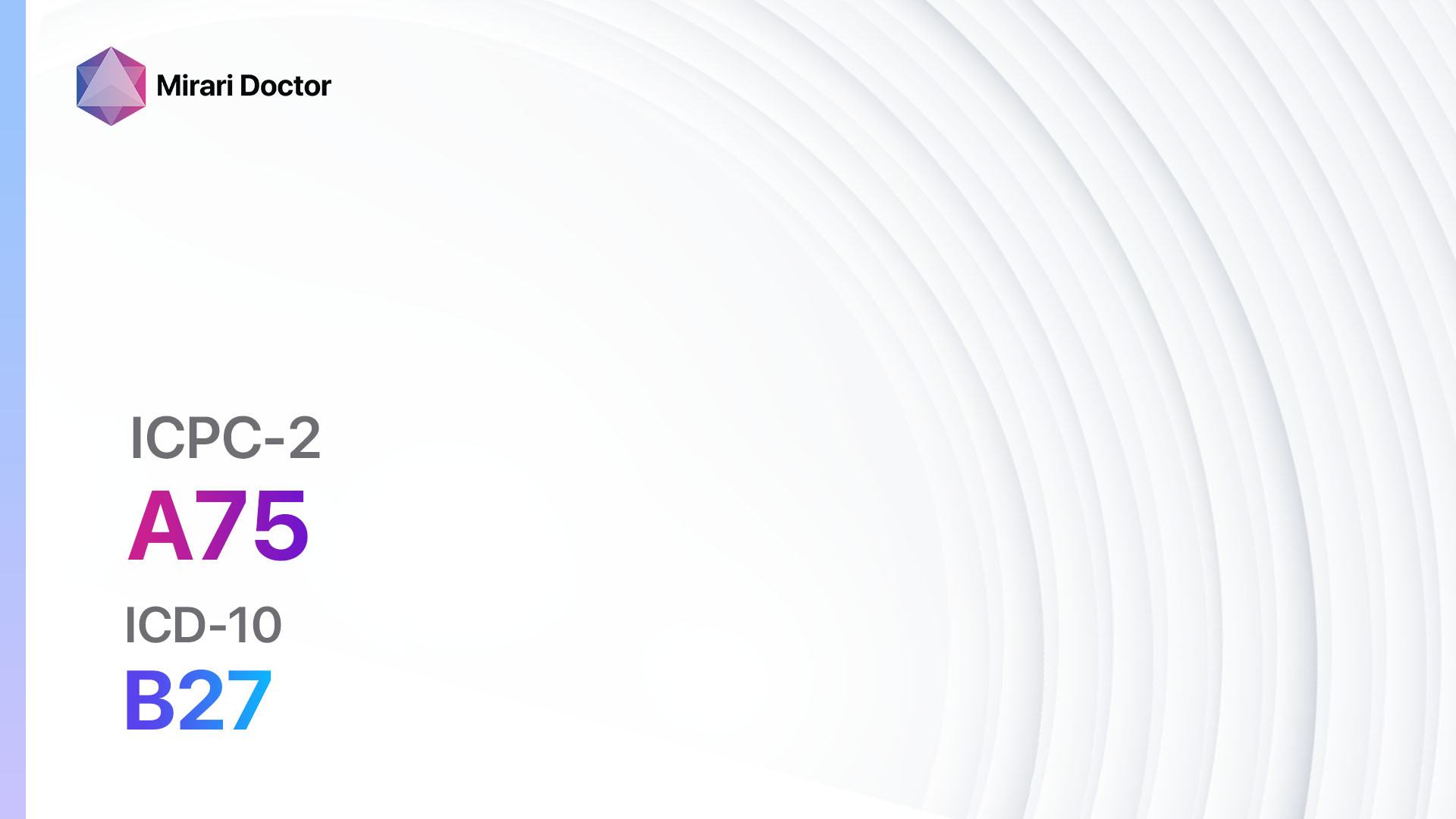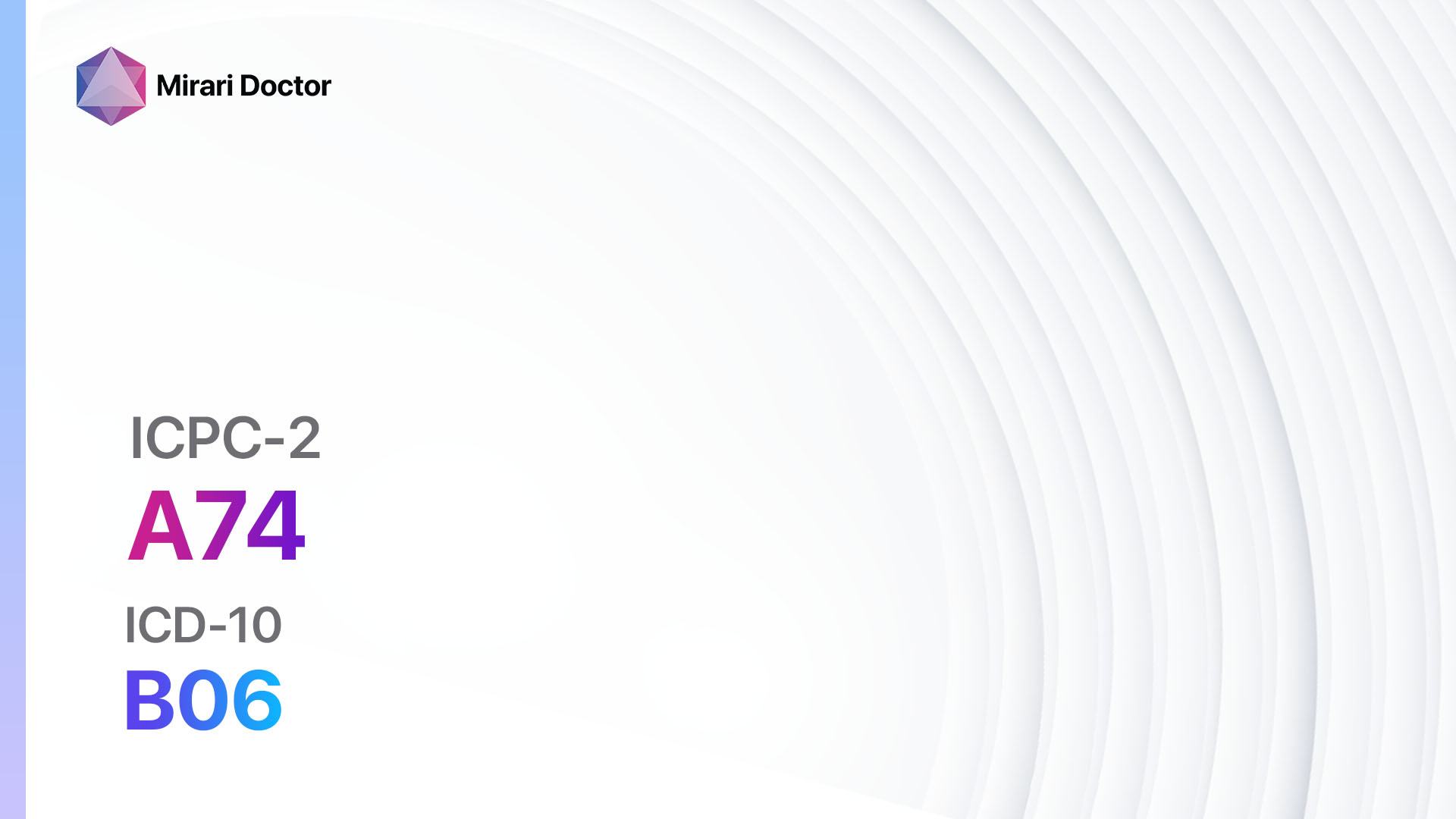
Introduction
Multiple trauma/injuries refer to the occurrence of multiple injuries or traumas in a patient[1]. These injuries can be caused by various factors such as accidents, falls, or physical assaults[2]. The significance of this condition lies in the potential for severe physical and psychological consequences for the patient[3]. The aim of this guide is to provide healthcare professionals with a comprehensive overview of the diagnostic steps, possible interventions, and patient education related to multiple trauma/injuries.
Codes
Symptoms
- Pain: Patients may experience pain in various parts of the body, depending on the location and severity of the injuries[6].
- Swelling: Swelling may be present in the affected areas[7].
- Bruising: Bruising or discoloration of the skin may occur due to trauma[8].
- Difficulty moving or using affected body parts: Patients may have difficulty moving or using the affected body parts due to pain or restricted mobility[9].
- Deformity: In some cases, injuries may cause visible deformities in the affected areas[10].
Causes
- Accidents: Motor vehicle accidents, falls, and sports-related injuries are common causes of multiple trauma/injuries.
- Physical assaults: Intentional acts of violence can result in multiple injuries.
- Occupational hazards: Certain occupations, such as construction or law enforcement, may expose individuals to a higher risk of multiple trauma/injuries.
Diagnostic Steps
Medical History
- Gather information about the circumstances surrounding the injuries, including the mechanism of injury and any associated symptoms.
- Identify any pre-existing medical conditions or risk factors that may affect the management of the injuries.
- Assess the patient’s overall health status and any medications they may be taking.
Physical Examination
- Perform a thorough physical examination to assess the extent and severity of the injuries.
- Evaluate vital signs, including blood pressure, heart rate, and respiratory rate.
- Assess the range of motion, strength, and sensation in the affected body parts.
- Look for signs of swelling, bruising, or deformity.
- Check for any open wounds or signs of infection.
Laboratory Tests
- Complete blood count (CBC): To assess for signs of infection or anemia.
- Blood chemistry panel: To evaluate organ function and electrolyte levels.
- Coagulation studies: To assess the patient’s ability to form blood clots.
- Urinalysis: To check for signs of kidney injury or infection.
- Toxicology screening: To identify any substances that may have contributed to the injuries.
Diagnostic Imaging
- X-rays: To visualize fractures, dislocations, or other bony injuries.
- CT scans: To assess internal injuries, such as organ damage or bleeding.
- MRI: To evaluate soft tissue injuries, such as ligament tears or muscle damage.
- Ultrasound: To assess for internal bleeding or fluid accumulation.
Other Tests
- Electrocardiogram (ECG): To evaluate cardiac function and rule out any cardiac-related injuries.
- Pulmonary function tests: To assess lung function and rule out any respiratory-related injuries.
- Neurological assessment: To evaluate the patient’s neurological status and identify any brain or spinal cord injuries.
Follow-up and Patient Education
- Schedule follow-up appointments to monitor the progress of the injuries and ensure proper healing.
- Provide patients with information on self-care measures, such as rest, ice, compression, and elevation (RICE) for pain and swelling management.
- Educate patients on the importance of adhering to any prescribed medications or treatments.
- Discuss the potential long-term consequences of the injuries and provide resources for rehabilitation or physical therapy if necessary.
Possible Interventions
Traditional Interventions
Medications:
Top 5 drugs for multiple trauma/injuries:
- Analgesics (e.g., Acetaminophen, Ibuprofen):
- Cost: Generic versions can be $3-$10/month.
- Contraindications: Allergy to the medication, active gastrointestinal bleeding.
- Side effects: Upset stomach, dizziness.
- Severe side effects: Liver damage, kidney damage.
- Drug interactions: Warfarin, other nonsteroidal anti-inflammatory drugs (NSAIDs).
- Warning: Avoid exceeding the recommended dosage.
- Muscle relaxants (e.g., Cyclobenzaprine, Methocarbamol):
- Cost: Generic versions can be $10-$30/month.
- Contraindications: Allergy to the medication, history of liver disease.
- Side effects: Drowsiness, dry mouth.
- Severe side effects: Severe allergic reactions, liver toxicity.
- Drug interactions: Alcohol, opioids.
- Warning: Avoid driving or operating heavy machinery while taking these medications.
- Antibiotics (e.g., Amoxicillin, Cephalexin):
- Cost: Generic versions can be $10-$30/month.
- Contraindications: Allergy to the medication, history of severe allergic reactions to penicillin.
- Side effects: Upset stomach, diarrhea.
- Severe side effects: Severe allergic reactions, Clostridium difficile infection.
- Drug interactions: Oral contraceptives, warfarin.
- Warning: Complete the full course of antibiotics as prescribed.
- Anticoagulants (e.g., Heparin, Warfarin):
- Cost: Generic versions can be $10-$50/month.
- Contraindications: Active bleeding, history of heparin-induced thrombocytopenia.
- Side effects: Easy bruising, bleeding.
- Severe side effects: Severe bleeding, heparin-induced thrombocytopenia.
- Drug interactions: Nonsteroidal anti-inflammatory drugs (NSAIDs), other anticoagulants.
- Warning: Regular monitoring of blood clotting parameters is required.
- Antiemetics (e.g., Ondansetron, Metoclopramide):
- Cost: Generic versions can be $10-$30/month.
- Contraindications: Allergy to the medication, history of movement disorders.
- Side effects: Headache, constipation.
- Severe side effects: Serotonin syndrome, extrapyramidal symptoms.
- Drug interactions: Serotonergic medications, dopamine antagonists.
- Warning: Avoid driving or operating heavy machinery while taking these medications.
Alternative Drugs:
- Corticosteroids (e.g., Prednisone): May be used to reduce inflammation and swelling.
- Antidepressants (e.g., Amitriptyline): Can help manage chronic pain associated with multiple trauma/injuries.
- Anticonvulsants (e.g., Gabapentin): May be used to manage neuropathic pain.
Surgical Procedures:
- Fracture fixation: Surgical repair of fractures using plates, screws, or rods.
- Wound debridement: Removal of dead or contaminated tissue to promote wound healing.
- Internal fixation: Surgical placement of implants to stabilize fractures or dislocations.
- Soft tissue repair: Surgical repair of torn ligaments, tendons, or muscles.
- Organ repair or removal: Surgical intervention to repair or remove damaged organs.
Alternative Interventions
- Acupuncture: May help reduce pain and promote healing. Cost: $60-$120 per session.
- Chiropractic care: Can help with pain management and musculoskeletal alignment. Cost: $50-$200 per session.
- Massage therapy: May help reduce muscle tension and promote relaxation. Cost: $50-$100 per session.
- Physical therapy: Can aid in rehabilitation and improve mobility. Cost: $75-$150 per session.
- Mind-body techniques (e.g., meditation, yoga): May help manage stress and promote overall well-being. Cost: Varies depending on the specific program or class.
Lifestyle Interventions
- Rest and sleep: Adequate rest and sleep are essential for the body’s healing process.
- Healthy diet: A balanced diet rich in nutrients can support the body’s healing and recovery.
- Physical activity: Gradual and appropriate physical activity can help improve strength and mobility.
- Stress management: Engaging in stress-reducing activities, such as meditation or deep breathing exercises, can promote overall well-being.
- Supportive devices: The use of assistive devices, such as crutches or braces, can aid in mobility and prevent further injury.
It is important to note that the cost ranges provided are approximate and may vary depending on the location and availability of the interventions.Video instructions for using Mirari Cold Plasma Device – A81 Multiple trauma/injuries (ICD-10:T07)
Mirari Cold Plasma Alternative Intervention
Understanding Mirari Cold Plasma
- Safe and Non-Invasive Treatment: Mirari Cold Plasma is a safe and non-invasive treatment option for various skin conditions. It does not require incisions, minimizing the risk of scarring, bleeding, or tissue damage.
- Efficient Extraction of Foreign Bodies: Mirari Cold Plasma facilitates the removal of foreign bodies from the skin by degrading and dissociating organic matter, allowing easier access and extraction.
- Pain Reduction and Comfort: Mirari Cold Plasma has a local analgesic effect, providing pain relief during the treatment, making it more comfortable for the patient.
- Reduced Risk of Infection: Mirari Cold Plasma has antimicrobial properties, effectively killing bacteria and reducing the risk of infection.
- Accelerated Healing and Minimal Scarring: Mirari Cold Plasma stimulates wound healing and tissue regeneration, reducing healing time and minimizing the formation of scars.
Mirari Cold Plasma Prescription
Video instructions for using Mirari Cold Plasma Device – A81 Multiple trauma/injuries (ICD-10:T07)
| Mild | Moderate | Severe |
| Mode setting: 1 (Infection) Location: 0 (Localized) Morning: 15 minutes, Evening: 15 minutes |
Mode setting: 1 (Infection) Location: 0 (Localized) Morning: 30 minutes, Lunch: 30 minutes, Evening: 30 minutes |
Mode setting: 1 (Infection) Location: 0 (Localized) Morning: 30 minutes, Lunch: 30 minutes, Evening: 30 minutes |
| Mode setting: 2 (Wound Healing) Location: 0 (Localized) Morning: 15 minutes, Evening: 15 minutes |
Mode setting: 2 (Wound Healing) Location: 0 (Localized) Morning: 30 minutes, Lunch: 30 minutes, Evening: 30 minutes |
Mode setting: 2 (Wound Healing) Location: 0 (Localized) Morning: 30 minutes, Lunch: 30 minutes, Evening: 30 minutes |
| Mode setting: 7 (Immunotherapy) Location: 1 (Sacrum) Morning: 15 minutes, Evening: 15 minutes |
Mode setting: 7 (Immunotherapy) Location: 1 (Sacrum) Morning: 30 minutes, Lunch: 30 minutes, Evening: 30 minutes |
Mode setting: 7 (Immunotherapy) Location: 1 (Sacrum) Morning: 30 minutes, Lunch: 30 minutes, Evening: 30 minutes |
| Mode setting: 7 (Immunotherapy) Location: 7 (Neuro system & ENT) Morning: 15 minutes, Evening: 15 minutes |
Mode setting: 7 (Immunotherapy) Location: 7 (Neuro system & ENT) Morning: 30 minutes, Lunch: 30 minutes, Evening: 30 minutes |
Mode setting: 7 (Immunotherapy) Location: 7 (Neuro system & ENT) Morning: 30 minutes, Lunch: 30 minutes, Evening: 30 minutes |
| Total Morning: 60 minutes approx. $10 USD, Evening: 60 minutes approx. $10 USD |
Total Morning: 120 minutes approx. $20 USD, Lunch: 120 minutes approx. $20 USD, Evening: 120 minutes approx. $20 USD, |
Total Morning: 120 minutes approx. $20 USD, Lunch: 120 minutes approx. $20 USD, Evening: 120 minutes approx. $20 USD, |
| Usual treatment for 7-60 days approx. $140 USD – $1200 USD | Usual treatment for 6-8 weeks approx. $2,520 USD – $3,360 USD |
Usual treatment for 3-6 months approx. $5,400 USD – $10,800 USD
|
 |
|
Use the Mirari Cold Plasma device to treat Multiple trauma/injuries effectively.
WARNING: MIRARI COLD PLASMA IS DESIGNED FOR THE HUMAN BODY WITHOUT ANY ARTIFICIAL OR THIRD PARTY PRODUCTS. USE OF OTHER PRODUCTS IN COMBINATION WITH MIRARI COLD PLASMA MAY CAUSE UNPREDICTABLE EFFECTS, HARM OR INJURY. PLEASE CONSULT A MEDICAL PROFESSIONAL BEFORE COMBINING ANY OTHER PRODUCTS WITH USE OF MIRARI.
Step 1: Cleanse the Skin
- Start by cleaning the affected area of the skin with a gentle cleanser or mild soap and water. Gently pat the area dry with a clean towel.
Step 2: Prepare the Mirari Cold Plasma device
- Ensure that the Mirari Cold Plasma device is fully charged or has fresh batteries as per the manufacturer’s instructions. Make sure the device is clean and in good working condition.
- Switch on the Mirari device using the power button or by following the specific instructions provided with the device.
- Some Mirari devices may have adjustable settings for intensity or treatment duration. Follow the manufacturer’s instructions to select the appropriate settings based on your needs and the recommended guidelines.
Step 3: Apply the Device
- Place the Mirari device in direct contact with the affected area of the skin. Gently glide or hold the device over the skin surface, ensuring even coverage of the area experiencing.
- Slowly move the Mirari device in a circular motion or follow a specific pattern as indicated in the user manual. This helps ensure thorough treatment coverage.
Step 4: Monitor and Assess:
- Keep track of your progress and evaluate the effectiveness of the Mirari device in managing your Multiple trauma/injuries. If you have any concerns or notice any adverse reactions, consult with your health care professional.
Note
This guide is for informational purposes only and should not replace the advice of a medical professional. Always consult with your healthcare provider or a qualified medical professional for personal advice, diagnosis, or treatment. Do not solely rely on the information presented here for decisions about your health. Use of this information is at your own risk. The authors of this guide, nor any associated entities or platforms, are not responsible for any potential adverse effects or outcomes based on the content.
Mirari Cold Plasma System Disclaimer
- Purpose: The Mirari Cold Plasma System is a Class 2 medical device designed for use by trained healthcare professionals. It is registered for use in Thailand and Vietnam. It is not intended for use outside of these locations.
- Informational Use: The content and information provided with the device are for educational and informational purposes only. They are not a substitute for professional medical advice or care.
- Variable Outcomes: While the device is approved for specific uses, individual outcomes can differ. We do not assert or guarantee specific medical outcomes.
- Consultation: Prior to utilizing the device or making decisions based on its content, it is essential to consult with a Certified Mirari Tele-Therapist and your medical healthcare provider regarding specific protocols.
- Liability: By using this device, users are acknowledging and accepting all potential risks. Neither the manufacturer nor the distributor will be held accountable for any adverse reactions, injuries, or damages stemming from its use.
- Geographical Availability: This device has received approval for designated purposes by the Thai and Vietnam FDA. As of now, outside of Thailand and Vietnam, the Mirari Cold Plasma System is not available for purchase or use.
References
- Butcher, N., & Balogh, Z. J. (2009). The definition of polytrauma: the need for international consensus. Injury, 40, S12-S22.
- Pfeifer, R., Tarkin, I. S., Rocos, B., & Pape, H. C. (2009). Patterns of mortality and causes of death in polytrauma patients—has anything changed?. Injury, 40(9), 907-911.
- Zatzick, D. F., Rivara, F. P., Nathens, A. B., Jurkovich, G. J., Wang, J., Fan, M. Y., … & MacKenzie, E. J. (2007). A nationwide US study of post-traumatic stress after hospitalization for physical injury. Psychological medicine, 37(10), 1469-1480.
- WONCA International Classification Committee. (1998). ICPC-2: International classification of primary care. Oxford University Press, USA.
- World Health Organization. (2015). International statistical classification of diseases and related health problems (10th ed.).
- Merskey, H., & Bogduk, N. (1994). Classification of chronic pain: Descriptions of chronic pain syndromes and definitions of pain terms (2nd ed.). IASP Press.
- Kumar, V., Abbas, A. K., & Aster, J. C. (2018). Robbins basic pathology (10th ed.). Elsevier.
- Kauvar, D. S., Lefering, R., & Wade, C. E. (2006). Impact of hemorrhage on trauma outcome: An overview of epidemiology, clinical presentations, and therapeutic considerations. Journal of Trauma and Acute Care Surgery, 60(6), S3-S11.
- Norkin, C. C., & White, D. J. (2016). Measurement of joint motion: A guide to goniometry (5th ed.). F.A. Davis Company.
- Doherty, G. M. (2015). Current diagnosis & treatment: Surgery (14th ed.). McGraw-Hill Education.
Related articles
Made in USA


